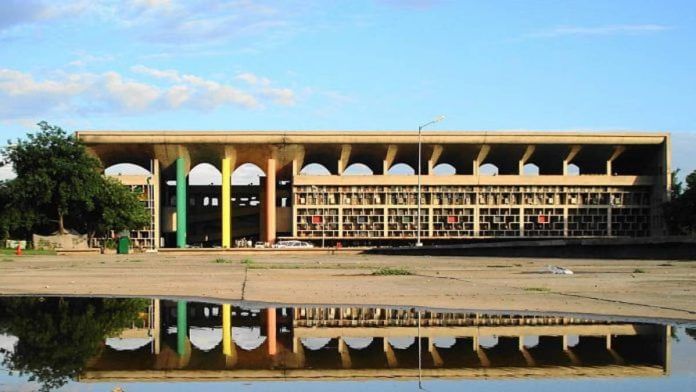Chandigarh: The Punjab and Haryana High Court has upheld a decades-old lower court order in a property dispute, invoking a unique analogy between Section 120 of the Indian Evidence Act, 1872, and the mythological concept of Ardhanarishvara—the half-male, half-female deity symbolising the union of masculine and feminine energies.
Section 120 of the Act pertains to parties to civil suits and their spouses, stating that in civil proceedings, the parties and their spouses are competent witnesses, and in criminal proceedings, the spouse of the accused is also a competent witness.
Justice Deepak Gupta, while dismissing an appeal against the lower court’s order, reasoned in a judgment delivered on 1 April that the ancient Indian concept of Ardhanarishvara underpins the legal provision allowing spouses to testify on each other’s behalf. The judge, thus, reinforced the competency of a key witness in the case and affirmed the plaintiffs’ claim to the agricultural land in question in Faridabad.
The analogy was drawn in the context of evaluating witness testimony. Justice Gupta observed that Section 120 mirrors the idea of husband and wife as “one person” in Indian mythology.
“Even in western culture, a wife is referred to as the better half, a part of the same person,” he noted, emphasising that this unity allows a spouse to depose on behalf of the other, even on matters of personal knowledge like readiness and willingness in a contract dispute.
Also Read: HC allows survivor of alleged marital rape to terminate pregnancy — ‘reminder of trauma, agony’
A look at the case
The land battle in court goes back to an agreement-to-sell dated 28 April, 1984, when Kishan Chand, the original owner of the disputed land at Dulhepur village in Haryana’s Ballabgarh, agreed to sell it to plaintiffs Balbir Singh and others for Rs 4,43,115 at Rs 8,500 per acre, according to the order.
The deal saw an initial payment of Rs 1,00,000 as earnest money, with possession of Kishan Chand’s share (in a larger plot) handed over to the buyers.
A supplementary agreement on 10 June, 1985, extended the timeline for the sale deed’s execution, contingent on land partition proceedings and an income tax clearance certificate, with an additional Rs 50,000 paid. Over time, the plaintiffs claimed to have paid Rs 1,72,000, including adjustments for a tubewell and room they had constructed which were later allotted to Kishan Chand’s brother during land partition.
The plaintiffs alleged that despite their readiness to pay the balance and execute the sale deed, Kishan Chand failed to secure the required clearances for sale of his plot and instead entered into a subsequent agreement on 17 July, 1986, to sell the same land to another party (defendant No. 2) for Rs 4,00,000, appointing a general power of attorney (defendant No. 3) to facilitate it.
This prompted the plaintiffs to file a suit in 1986 for specific performance of the contract (of April 1984), which the trial court decreed in their favour on 17 April, 1995.
The first appellate court upheld this decision on 19 August, 1998, leading the defendants—now represented by Kishan Chand’s legal heirs and others—to escalate the matter to the high court.
Kishan Chand’s heirs challenged the lower courts’ findings on multiple grounds: the plaintiffs’ readiness and willingness, and the suit’s maintainability.
Central to their argument was the claim that Balbir Singh and others’ reliance on Sampooran Singh—husband of plaintiff Surinder Kaur and father of two others—as a witness in the matter via a 1991 power of attorney was invalid.
Justice Gupta, however, by invoking Section 120 of the Indian Evidence Act, highlighted Sampooran Singh’s deep involvement in the transaction—not just as an attorney but as a family member integral to the deal from the outset.
The judge pointed to the 1985 supplementary agreement signed by Sampooran Singh, a legal notice from Kishan Chand addressed to him in 1986, and his presence during the post-partition possession handover on 30 May, 1986.
“Sampooran Singh has been associated with the transaction since the beginning,” Justice Gupta wrote.
Drawing on the Ardhanarishvara analogy, the court held that as the husband of a plaintiff, Sampooran Singh was legally competent to testify on her behalf, even on readiness and willingness, without needing a formal power of attorney at every stage.
This exception, Gupta noted, aligns with the Supreme Court’s stance in Man Kaur vs Hartar Singh Sangha (2010), where close family members managing affairs can testify in such matters.
(Edited by Nida Fatima Siddiqui)
Also Read: Protesting lawyers bring Punjab & Haryana HC to a halt, no relief in sight for litigants






